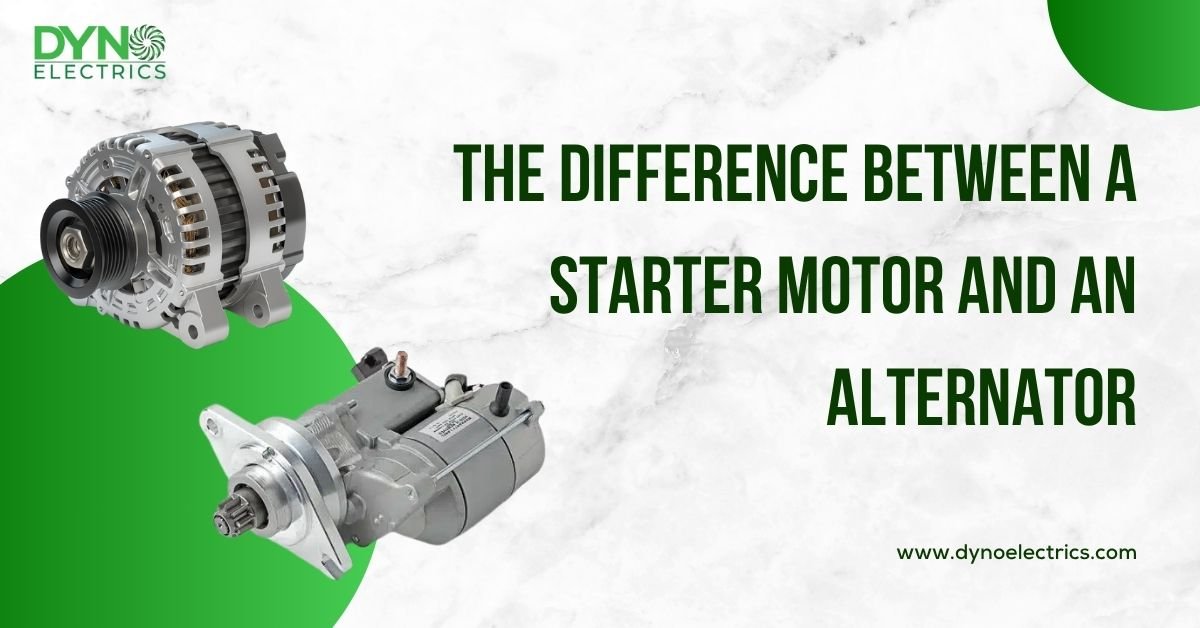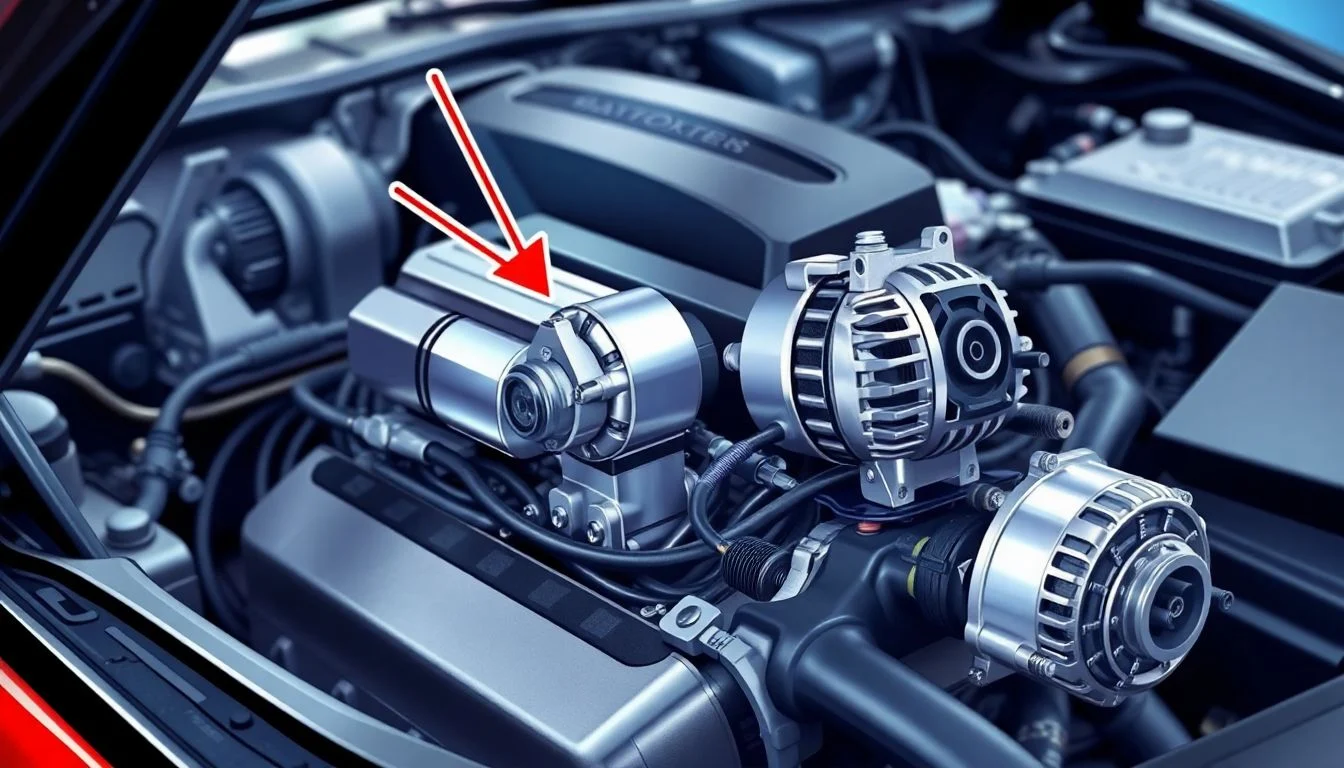
Introduction
Most drivers know their car needs a battery, but few understand what makes the vehicle start or keep running. The engine’s electrical system is a small but vital part of this. Two key components often cause confusion: the starter motor and the alternator. Though they work together to keep your car moving and powered, they do completely different jobs. Understanding what each does can save you money and help you catch problems early. Let’s simplify these parts so you know what they do and why they matter.
What Is a Starter Motor?
Definition and Basic Function
Think of the starter motor as your car’s “go” button. Its main role is to jump-start the engine so it can run on its own. Without it, your car won’t start at all. The starter motor is like the engine’s ignition switch on steroids, helping to start the combustion process.
How the Starter Motor Works
When you turn the key or press the start button, a small electrical signal activates the starter motor. It then engages with the engine’s flywheel—like a gear turning a big wheel. Inside, the motor spins, pushing the pistons up and down. This gets the engine running. The process is quick but crucial. Once the engine is running, the starter motor turns off.
Common Problems with Starter Motors
If your car struggles to start or makes a clicking sound when turning the key, the starter could be faulty. Worn brushes within the motor, a bad solenoid, or electrical issues often cause these problems. The starter motor might also just wear out after many years or thousands of starts.
Real-World Example
Imagine trying to start your car one morning, and all you hear is a loud click. It could be the starter motor and nothing else is wrong with the engine itself. Replacing the starter usually solves this issue and gets your vehicle back on the road quickly.
What Is an Alternator?
Definition and Basic Function
While the starter motor gets your engine going, the alternator keeps it running smoothly. It acts like the car’s power plant, generating electricity once the engine is working. Its main job is to charge the battery and power the vehicle’s electrical systems.
How the Alternator Works
The alternator uses the engine’s mechanical energy—turned by a belt—to produce electrical power. Inside, a rotor spins inside a stator, creating an AC current. This is then converted to DC power suitable for your car. The alternator also has a regulator to keep voltage levels steady, ensuring all electrical parts get the right amount of power.
Common Problems with Alternators
Signs of a failing alternator include dim headlights, flickering dashboard lights, or a battery warning light. Problems often happen because of worn brushes, bad diodes, or a slipping belt. When the alternator stops working, the battery can’t recharge, leaving your vehicle unable to run for long.
Real-World Example
If your car’s battery keeps dying even after a new one is installed, the alternator might be the root cause. Replacing a faulty alternator fixes the problem and restores proper electrical flow.
Key Differences Between a Starter Motor and an Alternator

Function and Purpose
The starter motor’s job is simple: start the engine from a dead stop. The alternator’s purpose is ongoing—providing electricity while the engine runs and recharging the battery. You could say the starter gets your car fired up, while the alternator keeps it running.
Location and Components
Both are tucked inside the engine bay but in different spots. The starter motor sits near the engine’s flywheel, connected directly to the engine. The alternator is usually mounted on the side of the engine, connected with a belt.
Power Source and Operation
The starter motor only works when you turn the key or press start. It receives a large burst of electrical energy from the battery to get the engine going. The alternator, on the other hand, runs whenever the engine is on. It converts the engine’s mechanical motion into electricity continuously.
Lifespan and Maintenance
A typical starter lasts about 100,000 miles before needing replacement. The alternator usually lasts longer, around 150,000 miles or more. Regular checks like inspecting belts and cleaning terminals can extend both parts’ lives.
Impact on Vehicle Performance
When either component fails, your car can’t operate properly. A broken starter means no engine start. A faulty alternator can drain your battery and leave you stranded. Both need prompt repair to keep your vehicle reliable.
Why Understanding the Difference Matters
Routine Vehicle Maintenance
Getting familiar with these parts helps you spot issues earlier. If your car takes longer than usual to start, it might be the starter. If the dash warning light turns on, the alternator could be failing. Recognizing symptoms avoids bigger problems later.
Saving Money
Knowing the difference means you won’t waste money replacing the wrong part. Early diagnosis saves you from costly repairs and roadside breakdowns. Regular inspections can spot worn-out parts before they cause real trouble.
Improving Vehicle Reliability
A well-maintained electrical system keeps your vehicle dependable. Ensuring both the starter and alternator work properly reduces chances of unexpected failures. That means more cars on the road and fewer headaches.
Expert Insights and Recommendations
Automotive technicians emphasize the importance of routine checks. “Understanding your car’s electrical parts helps prevent breakdowns,” says one mechanic. They recommend inspecting the battery, belts, and electrical connections at least once a year. When replacing parts, choose quality brands to ensure durability and performance.
Conclusion
The starter motor and alternator are essential but serve very different roles in your vehicle. The starter helps your engine start, while the alternator keeps everything powered once it’s running. Recognizing their signs of failure can save you money and prevent breakdowns. Always keep up with regular maintenance, and don’t hesitate to seek professional advice if you notice unusual symptoms. Staying vigilant about your car’s electrical health ensures it runs smoothly, mile after mile.
